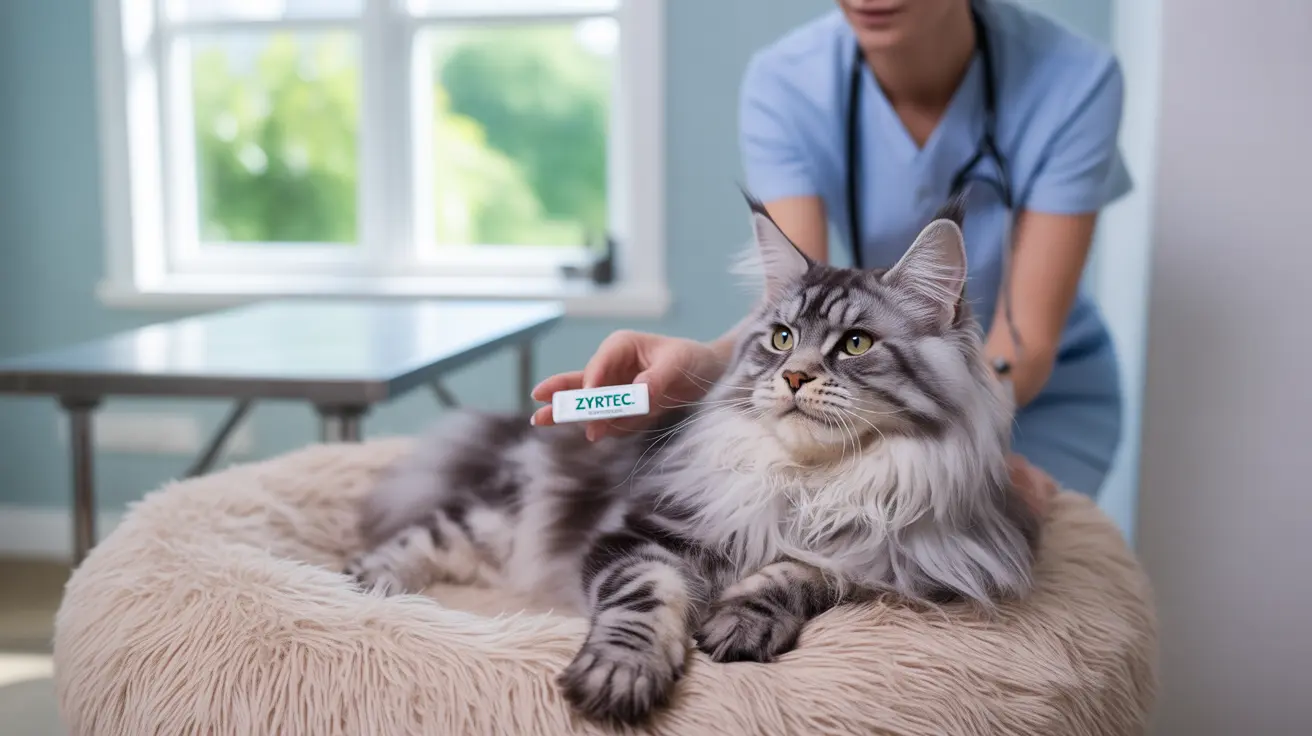If you're considering giving Zyrtec to your cat for allergy symptoms, you might be wondering about the safety of 10 mg doses. While Zyrtec (cetirizine) can be used in cats under veterinary supervision, understanding the proper dosage is crucial for your pet's safety and treatment success.
This comprehensive guide will explore everything you need to know about using Zyrtec in cats, including safe dosage ranges, potential risks, and important precautions to keep your feline friend healthy.
Understanding Zyrtec Dosage for Cats
The standard recommended dosage of Zyrtec for cats typically ranges from 2.5 to 5 mg once daily. While some veterinarians may prescribe up to 10 mg in specific cases, this higher dose isn't commonly recommended and should only be given under strict veterinary supervision.
Several factors influence the appropriate dosage for your cat, including:
- Weight and size
- Severity of symptoms
- Overall health condition
- Other medications being taken
- Individual response to treatment
Safety Considerations and Proper Administration
When using Zyrtec for cats, safety should be your primary concern. Only use regular Zyrtec tablets – never Zyrtec-D or liquid formulations. Here's why:
- Regular tablets contain only cetirizine
- Liquid forms may contain toxic propylene glycol
- Zyrtec-D contains pseudoephedrine, which is potentially fatal to cats
Monitoring Your Cat's Response
After administering Zyrtec, watch for these signs of positive response:
- Reduced scratching and itching
- Decreased skin inflammation
- Improved comfort level
- Normal activity levels
Potential Side Effects and Warning Signs
While Zyrtec is generally well-tolerated by cats, be aware of possible side effects, especially with higher doses:
- Drowsiness or lethargy
- Dry mouth
- Digestive upset
- Vomiting (rare)
- Changes in appetite
- Excessive salivation
When to Contact Your Veterinarian
Seek immediate veterinary care if you notice:
- Severe lethargy
- Persistent vomiting
- Signs of allergic reaction
- Unusual behavior changes
- Difficulty breathing
Treatment Duration and Effectiveness
Zyrtec's effectiveness can typically be evaluated within 1-2 doses. Your veterinarian may recommend short-term or long-term use depending on your cat's specific condition and response to treatment.
Frequently Asked Questions
What is the safe dosage of 10 mg Zyrtec for cats and how often should it be given?
While 10 mg is the maximum dose sometimes prescribed, the standard safe dosage is 2.5-5 mg once daily. Never administer 10 mg without specific veterinary guidance, as lower doses are typically sufficient and safer.
Can I give my cat liquid Zyrtec or Zyrtec-D, and are there any risks?
No, never give cats liquid Zyrtec or Zyrtec-D. Liquid formulations may contain toxic propylene glycol, and Zyrtec-D contains pseudoephedrine, which can be fatal to cats. Only use regular Zyrtec tablets.
What are the common side effects of Zyrtec in cats and when should I contact my vet?
Common side effects include drowsiness, dry mouth, and occasional digestive upset. Contact your vet immediately if you notice severe lethargy, persistent vomiting, difficulty breathing, or significant behavior changes.
How effective is Zyrtec for treating my cat's allergic skin itching or nasal symptoms?
Zyrtec's effectiveness varies among cats. Many experience relief from skin itching within 1-2 doses, while others may need alternative treatments. Your vet can evaluate its effectiveness and adjust treatment as needed.
Are there any medications or health conditions that make giving Zyrtec unsafe for my cat?
Zyrtec may interact with other sedating medications. Cats with kidney disease, liver problems, or certain medical conditions may need adjusted dosages or alternative treatments. Always inform your vet about any medications or health issues.
Remember, while Zyrtec can be an effective treatment for allergic symptoms in cats, proper veterinary guidance is essential for safe and successful treatment. Never start or adjust your cat's medication without consulting your veterinarian first.






